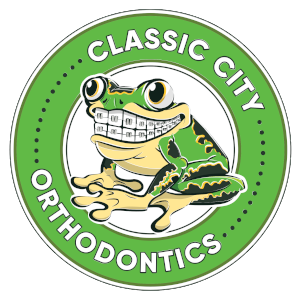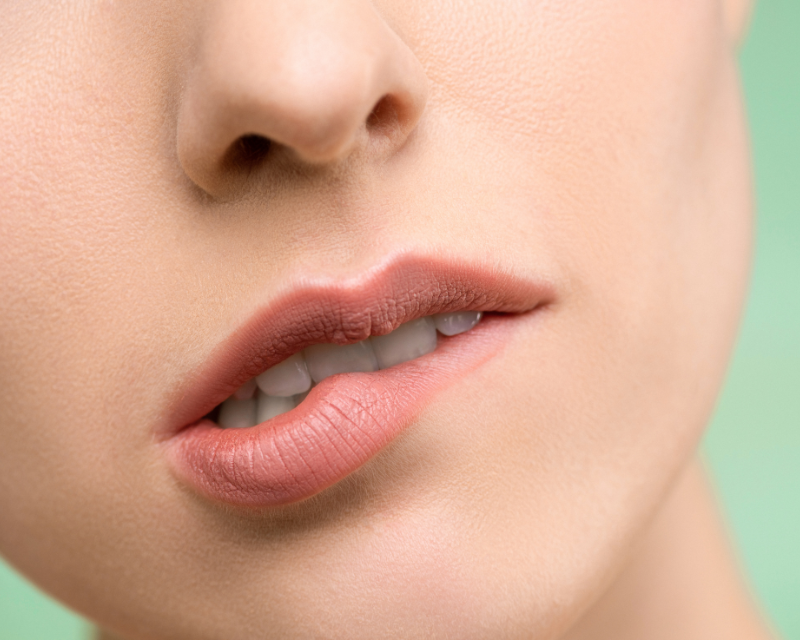Orthodontic treatment can transform your smile, but sometimes unexpected issues arise that require immediate attention. Whether you’re dealing with a broken bracket, a poking wire, or sudden discomfort, knowing how to handle an orthodontic emergency can save you time, reduce pain, and protect your treatment progress. This comprehensive guide walks you through the steps to manage these situations effectively, ensuring you’re prepared for anything that comes your way.
Emergencies don’t always happen during office hours, so having a clear plan is essential. From quick fixes at home to knowing when to seek professional help, we’ve covered you with practical advice tailored to common orthodontic mishaps.
Easy steps to tackle any orthodontic emergency, like a pro
Most orthodontic issues are not life-threatening, they can cause discomfort and anxiety. The key is to stay calm, assess the situation, and take appropriate action. In this guide, we’ll walk you through common orthodontic emergencies, what you can do at home, and when you should seek professional help. Let’s dive into this step-by-step guide to confidently managing an orthodontic emergency.
Step 1: Assess the Orthodontic Emergency Calmly
When faced with an orthodontic emergency, the first step is to stay calm. Panicking can make it harder to think clearly and address the issue effectively. Take a moment to evaluate what’s happening. Is it a broken braces wire poking your cheek? A loose bracket? Or perhaps unexpected soreness after an adjustment? Identifying the problem helps you determine the urgency and the best course of action.
For example, a wire sticking out might be manageable at home temporarily, while severe pain or swelling could signal a more serious dental emergency requiring immediate professional attention. Take a deep breath, grab a mirror, and inspect the situation carefully. This initial assessment sets the stage for the next steps in your emergency orthodontic treatment plan.
Step 2: Try Simple At-Home Fixes for an Orthodontic Emergency
Many orthodontic emergencies can be eased with basic tools you likely have at home. Here are some common issues and quick fixes:
- Poking Wire: If a wire from your broken braces is irritating your mouth, use the eraser end of a pencil to gently push it back into place. Alternatively, cover it with orthodontic wax (available at most pharmacies) to create a barrier between the wire and your cheek or gums.
- Loose Bracket: If a bracket comes loose but is still attached to the wire, apply a small amount of wax to stabilize it and prevent further movement. Avoid chewing on that side of your mouth until it’s repaired.
- Orthodontic Pain Relief: Mild discomfort is normal after adjustments, but if it escalates, rinse your mouth with warm saltwater (1 teaspoon of salt in 8 ounces of water) to soothe irritation. Over-the-counter pain relievers like ibuprofen can also help, but follow dosage instructions carefully.
These temporary measures can provide relief and buy you time until you can visit your orthodontist. However, they’re not permanent solutions—professional orthodontic care is key to fixing the root problem.
Step 3: Know When an Orthodontic Emergency Requires Urgent Care
Not every issue qualifies as a full-blown orthodontic emergency, but some situations demand urgent attention. Here’s how to tell the difference:
- Severe Pain or Swelling: Persistent, intense pain or noticeable swelling in your gums or face could indicate an infection or injury beyond typical orthodontic discomfort. This is a dental emergency that needs prompt evaluation.
- Trauma to the Mouth: If you’ve experienced an accident (like a fall or sports injury) that damages your braces or teeth, seek care immediately. Trauma can affect both your orthodontic appliances and your overall oral health.
- Swallowed Components: While rare, swallowing a bracket or piece of wire warrants a call to your orthodontist or doctor to ensure it’s not a health risk.
For less urgent issues—like a mildly irritating wire or minor soreness—schedule an appointment during regular hours. Understanding the severity helps you prioritize emergency orthodontic treatment without unnecessary stress.
Step 4: Contact Your Orthodontist During an Orthodontic Emergency
Once you’ve stabilized the situation, reach out to your orthodontist as soon as possible. Most practices, including those specializing in orthodontic care, offer guidance for emergencies, even after hours. Call their office, explain the issue (e.g., broken braces, loose appliances, or ongoing pain), and follow their instructions.
If it’s outside regular hours, check their website or voicemail for an emergency contact number. Orthodontists are trained to handle orthodontic emergencies and can advise whether you need to come in right away or if the issue can wait. Be prepared to describe your symptoms in detail—specificity helps them provide the best care quickly.
Step 5: Prevent Future Orthodontic Emergencies
After resolving your orthodontic emergency, take steps to avoid repeat incidents. Prevention is a critical part of maintaining smooth orthodontic care. Consider these tips:
- Avoid Hard or Sticky Foods: Crunchy snacks (like popcorn or nuts) and sticky treats (like caramel or gum) are common culprits behind broken braces and loose brackets. Stick to softer foods to protect your appliances.
- Wear a Mouthguard: If you play sports, a custom-fitted mouthguard can shield your braces and teeth from trauma.
- Follow Care Instructions: Proper brushing, flossing, and adherence to your orthodontist’s advice reduce the risk of irritation or damage needing emergency orthodontic treatment.
Being proactive keeps your treatment on track and minimizes unexpected hiccups.
What to Expect During Orthodontic Emergency Treatment
When you visit your orthodontist for an orthodontic emergency, they’ll assess the damage and provide tailored solutions. For instance:
- Assessment and Diagnosis:
- Detailed Examination: The first step is a thorough examination of the affected area. This might involve visual inspection, palpation (feeling the area), and possibly X-rays to assess underlying issues.
- Identifying the Root Cause: The orthodontist will pinpoint the exact cause of the emergency. Is it a broken wire, a dislodged bracket, an infection, or something else? Understanding the cause is crucial for effective treatment.
- Patient History: They might ask about recent activities, foods eaten, or any trauma that could have contributed to the problem.
- Tailored Solutions:
Poking Wires:
- Clipping: Small wire cutters are used to trim the protruding wire.
- Repositioning: The wire can be carefully bent or tucked back into the bracket or tube.
- Orthodontic Wax: In some cases, temporary relief can be provided by applying orthodontic wax to cover the sharp end of the wire.
Loose or Broken Brackets/Bands:
- Reattachment: If the bracket is intact, it can be re-bonded to the tooth using dental adhesive.
- Replacement: If the bracket is broken or damaged, a new one will be attached.
- Band Removal: If a band is loose, sometimes it is best to remove it, and replace it at a later date.
Loose or Broken Retainers:
- Repair: If possible, retainers can be repaired in the office or sent to a lab for repair.
- Replacement: If the damage is too extensive, a new retainer might be necessary.
Infections and Severe Pain:
- Referral: If an infection (e.g., gum inflammation, abscess) is present, the orthodontist may prescribe antibiotics or refer you to a general dentist or oral surgeon for further treatment.
- Pain Management: Over-the-counter pain relievers or topical anesthetics may be recommended to alleviate discomfort.
Trauma to the Mouth:
- Assessment of Damage: If the trauma involves teeth being knocked loose, or broken, the orthodontist will assess the damage, and coordinate with a general dentist, or oral surgeon.
- Splinting: In the case of loose teeth, the orthodontist or general dentist may splint the teeth to stabilize them.
- Restoring Comfort and Progress:
- Pain Relief: The primary goal is to alleviate pain and discomfort. This might involve adjusting the appliance, providing pain medication, or offering advice on home care.
- Maintaining Treatment Progress: Orthodontic emergencies can disrupt treatment progress. The orthodontist will take steps to minimize delays and ensure the teeth continue to move as planned.
- Preventing Future Issues: The orthodontist may provide advice on how to prevent future emergencies, such as avoiding hard or sticky foods, practicing good oral hygiene, and wearing a mouthguard during sports.
- Education: The orthodontist will educate the patient on proper care of their appliance, and what constitutes a true emergency.
- The Importance of Orthodontic Expertise:
- Specialized Knowledge: Orthodontists have extensive training in the diagnosis and treatment of orthodontic problems. Their expertise allows them to quickly and effectively address emergencies.
- Proper Tools and Materials: Orthodontic offices are equipped with specialized tools and materials for repairing and adjusting braces and other appliances.
- Experience in Pain Management: Orthodontists are experienced in managing orthodontic pain and discomfort. They can provide effective pain relief and advice on home care.
In essence, an orthodontic emergency appointment is designed to address immediate problems, restore comfort, and ensure that the patient’s orthodontic treatment stays on track. By seeking prompt care, patients can minimize discomfort and prevent more serious complications.
Why Quick Action Matters in an Orthodontic Emergency
Delaying action during an orthodontic emergency can worsen the problem. A small issue, like a loose wire, might lead to sores or further damage to your braces if ignored. Acting swiftly—whether with at-home fixes or professional help—preserves your smile’s alignment and keeps discomfort at bay. Plus, addressing broken braces or other issues promptly avoids costly repairs down the line.
Trust Classic City Orthodontics for Your Orthodontic Needs
Navigating an orthodontic emergency doesn’t have to be overwhelming. By following this step-by-step guide, you can manage unexpected challenges with confidence and minimize disruption to your treatment. From assessing the situation to seeking emergency orthodontic treatment, preparation is your best ally.
At Classic City Orthodontics, we’re committed to providing exceptional orthodontic care for every situation—emergency or routine. Our experienced team, led by the skilled orthodontists at Classic City Orthodontics: Our Doctors, brings expertise and compassion to every patient. Whether you’re dealing with broken braces, need orthodontic pain relief, or simply want a consultation, we’re here to help.
Don’t let an orthodontic emergency catch you off guard. Schedule an appointment with us today at Classic City Orthodontics and experience personalized care that puts your smile first.
FAQs About Orthodontic Emergencies
Q: What qualifies as an orthodontic emergency?
A: An orthodontic emergency includes severe pain, swelling, trauma to the mouth, or significant damage to appliances like broken braces. Minor irritations, like a poking wire, can often be managed at home temporarily but still warrant a call to your orthodontist.
Q: Can I fix broken braces myself?
A: You can use temporary fixes—like wax for a loose bracket or pushing a wire aside—but permanent repairs require professional orthodontic care. Avoid cutting wires yourself, as this can cause further damage.
Q: How do I relieve pain from an orthodontic emergency?
A: For orthodontic pain relief, try warm salt water rinses or over-the-counter pain relievers. If discomfort persists or worsens, contact your orthodontist for emergency orthodontic treatment.
Q: What should I do if I swallow part of my braces?
A: It’s rare, but if you swallow a bracket or wire, call your orthodontist or doctor immediately. They’ll assess whether it’s a dental emergency requiring medical attention.
Q: How can I prevent orthodontic emergencies?
A: Avoid hard or sticky foods, wear a mouthguard during sports, and follow your orthodontist’s care instructions to minimize the risk of broken braces or other issues needing emergency orthodontic treatment.

